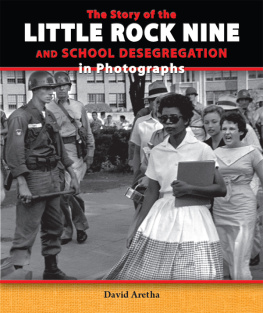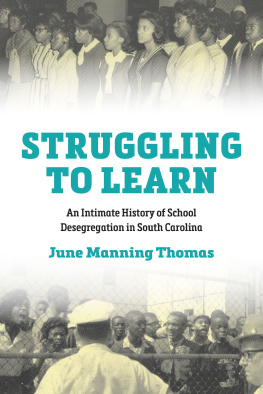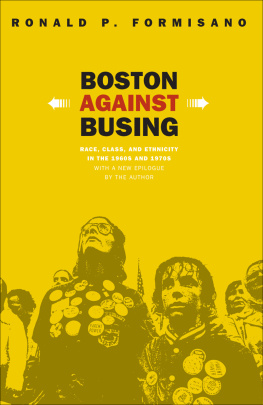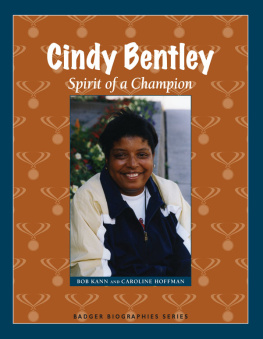
Copyright
Copyright 2017
Cindy Waszak Geary and LaHoma Smith Romocki
Going to School in Black and White: A Dual Memoir of Desegregation
Cindy Waszak Geary and LaHoma Smith Romocki
lightmessages.com/geary-romocki
cwaszak@mindspring.com
drromocki@gmail.com
First Edition
Published 2017 by Torchflame Books
lightmessages.com
Durham, NC 27713 USA
SAN: 920-9298
Paperback ISBN: 978-1-61153-252-4
E-book ISBN: 978-1-61153-251-7
Library of Congress Control Number: 2017949598
Cover image of Hillside High School (circa 1970)
from The Herald Sun
Author photograph by Dannie Daniel
ALL RIGHTS RESERVED
No part of this publication may be reproduced, stored in a retrieval system, or transmitted in any form or by any means, electronic, mechanical, photocopying, recording, scanning, or otherwise, except as permitted under Section 107 or 108 of the 1976 International Copyright Act, without the prior written permission except in brief quotations embodied in critical articles and reviews.
Some names and identifying details have been changed to protect the privacy of individuals.
Quotations
The events described are always less significant than the impressions they leave on the mind and heart.
bell hooks
Many things are true at once.
Elizabeth Alexander
Hearts must change.
President Barack Obama
Dedications
For my parents, Norma and Rudy Stock,
who taught me that we are all in this together
Cindy
For Mom and Dad and my entire village, for making sure that I always had everything I needed and surrounding me with unconditional love
LaHoma
Foreword
Foreword
Congratulations to Dr. Cynthia Waszak Geary and Dr. LaHoma Smith Romocki for their discourse on Going to School in Black and White: A Dual Memoir of Desegregation .
The desegregation of Hillside High School was a tremendous challenge of human growth and intellectual awakening of mind, body, and spirit. Fortunately, the administration, board of education and the parent-teacher-student organization accepted the challenge of embracing the change of human culture and lifestyle. Gods wisdom gives us love, faith, hope, joy, peace, patience, kindness, gentleness, and self-control.
The writers of this literary piece are honor graduates of Hillside High School, Durham, N.C., who continue noteworthy contributions to humankind.
Dr. John H. Lucas, Durham, N.C.
June 29, 2017
John H. Lucas Sr. was named the principal of Hillside High School in 1962 and was there during the events described in this book. He remained as principal until 1985. He went on to become president of Shaw University and was elected to the first school board of the newly merged Durham school systems, serving as its vice chairman. At age 97, he continues to be an active member of the White Rock Baptist Church where he is a Deacon Chair Emeritus and serves on multiple community, state, and national boards. He remains beloved by thousands of Hillside High alumni.
Prologue Why We Wrote This Book
Dr. John H. Lucas, Sr.
Prologue
Why We Wrote This Book
During the North Carolina summer of 1970, the Durham City Schools submitted The Permanent Plan for Desegregation of City Schools, approved two months later by the N.C. Court of Appeals. The Plan altered the school careers of two teenagers who lived across town from each other, 15-year-old Cindy Stock and 13-year-old LaHoma Smith. Both were assigned to schools they never anticipated attending, and eventually, both were brought together to attend the same high school. They became friends, but their friendship did not develop until many years later under very different circumstances.
Cindy, a white student, had just completed her three years at the predominantly white Rogers-Herr Junior High School and, until that summer of 1970, expected to move up to the predominantly white Durham High. LaHoma, a black student, attended the newer of the two predominantly black junior high schools, Shepard Junior High School, as a seventh grader. The Permanent Plan for Desegregation sent them to different schools than they would have attended otherwise. Cindy was assigned to Hillside High, Durhams historically black high school, and LaHoma was assigned to Whitted Junior High, the other, much older, black junior high school in a well-worn building across town, to be integrated with white students.
Going to School in Black and White is the dual memoir of two students who eventually found themselves at Hillside High School from different sides of a court-ordered racial balancing act. We are Cindy and LaHoma, and our experiences were the literal embodiment of desegregation policies, situated in a particular time and place. As adults, we have reflected on how these experiences played out on our individual paths. We now share these intertwining personal stories that are part of a bigger story about America, education, and raceand about how the personal relates to the political.
This story runs counter to the usual narrative in that it is a story (at least initially) of integration of white students into black schools. And it is unique because it brings together two perspectives. One perspective is that of a white student who found herself for the first time a part of a racial minority, and the other is that of a black student who had never attended integrated schools and could not understand why she had to leave a school she loved for one she felt was inferior. Going to School in Black and White focuses on our junior high and high school experiences but also moves beyond to college, where race and racial integration at our respective universities continued to shape our lives. Through the prism of our current friendship, each of us considers how our school experiences influenced life decisions and how these decisions brought us to similar places.
Memory is subject to bias and distortion when examined through the lens of more recent knowledge. Care has been taken to verify whatever is verifiable through public documents, and some names have been changed to protect the privacy of people we included in our stories. Adolescence is a murky time at best as we sort ourselves out, trying to understand who we are and how we feel about what is going on in our lives. With this in mind, we have been as honest as we could in sharing our experiences and feelings from more than 40 years ago.
1Setting the Stage
One
Setting the Stage
LaHoma
I grew up during a time when the integration of the Durham public schools was thought to be the single most important factor in improving the lives of the citys black residents. The idea was simpleif they went to schools with whites, black children would benefit by attending better-resourced schools, and that would lead to more academic opportunities and social mobility as a way to ensure social and economic success. This was the rationale for the struggle in which my parents and most of the adults I knew were engaged.










